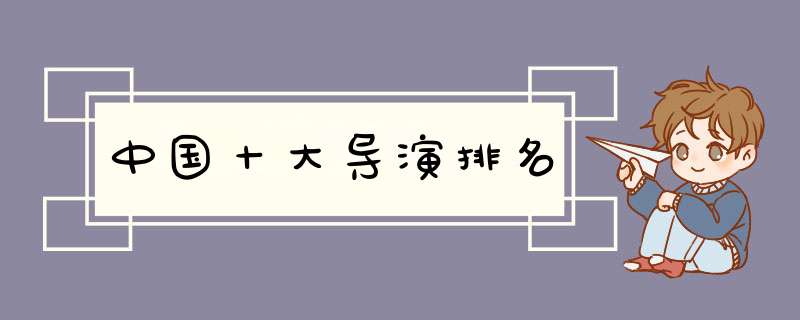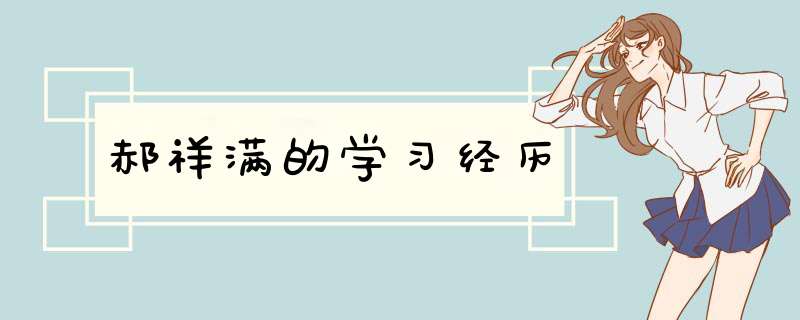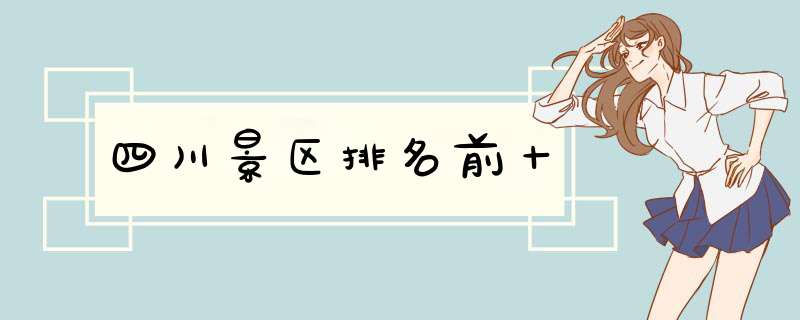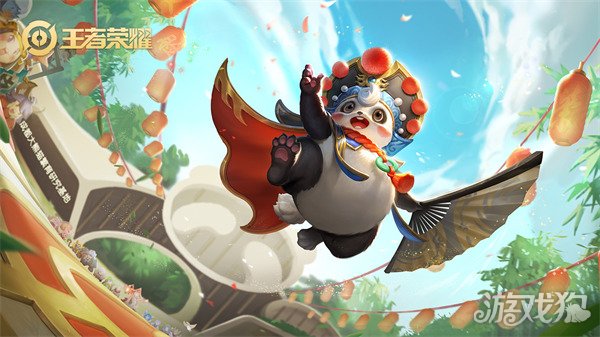中秋节来历英文资料
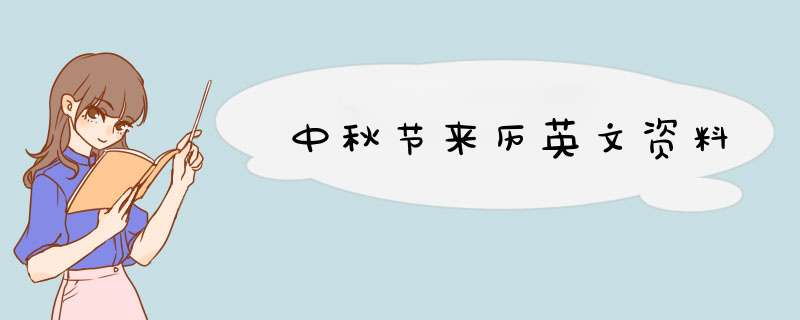
关于中秋节来历英文资料
八月十五过中秋,这是中华儿女的传统节日,大家知道怎么用英语介绍中秋节的习俗呢下面我整理了关于中秋节的来历英文介绍内容,供大家参考。
篇一:中秋节的来历(英语)
"Zhong Qiu Jie", which is also known as the Mid-Autumn Festival, is celebrated on the 15th day of the 8th month of the lunar calendar It is a time for family members and loved ones to congregate and enjoy the full moon - an auspicious symbol of abundance, harmony and luck Adults will usually indulge in fragrant mooncakes of many varieties with a good cup of piping hot Chinese tea, while the little ones run around with their brightly-lit lanterns
"Zhong Qiu Jie" probably began as a harvest festival The festival was later given a mythological flavour with legends of Chang-E, the beautiful lady in the moon
According to Chinese mythology, the earth once had 10 suns circling over it One day, all 10 suns appeared together, scorching the earth with their heat The earth was saved when a strong archer, Hou Yi, succeeded in shooting down 9 of the suns Yi stole the elixir of life to save the people from his tyrannical rule, but his wife, Chang-E drank it Thus started the legend of the lady in the moon to whom young Chinese girls would pray at the Mid-Autumn Festival
In the 14th century, the eating of mooncakes at "Zhong Qiu Jie" was given a new significance The story goes that when Zhu Yuan Zhang was plotting to overthrow the Yuan Dynasty started by the Mongolians, the rebels hid their messages in the Mid-Autumn mooncakes Zhong Qiu Jie is hence also a commemoration of the overthrow of the Mongolians by the Han people
During the Yuan Dynasty (AD1206-1368) China was ruled by the Mongolian people Leaders from the preceding Sung Dynasty(AD960-1279) were unhappy at submitting to foreign rule, and set how to coordinate the rebellion without it being discovered The leaders of the rebellion, knowing that the Moon Festival was drawing near, ordered the making of special cakes Packed into each mooncake was a message with the outline of the attack On the night of the Moon Festival, the rebels successfully attacked and overthrew the government What followed was the establishment of the Ming Dynasty (AD 1368-1644) Today, moon cakes are eaten to commemorate this event
Mid-Autumn Day is a traditional festival in China Almost everyone likes to eat mooncakes on that day Most families have a dinner together to celebrate the festival A saying goes, "The moon in your hometown is almost always the brightest and roundest" Many people who live far away from homes want to go back to have a family reunion How happy it is to enjoy the moon cakes while watching the full moon with your family members
译文:中秋节的来历(英语)
农历八月十五日庆祝“中秋节”,也就是中秋节。这是家人和亲人聚集和享受满月的时刻,这是一个丰满,和谐,幸运的吉祥象征。成年人通常会用一杯热腾腾的中国茶来盛放各种香浓的月饼,而小孩们则用灯火辉煌的灯笼四处奔波。
“中秋节”可能是作为丰收节开始的。这个节日后来被赋予了神话般的味道,与月球上美丽的女人嫦娥的传说。
根据中国神话,地球曾经有十个太阳在它上空盘旋。有一天,十个太阳全都出现在一起,用热气灼热地球。当一个强大的弓箭手侯仪成功击落了9个太阳时,地球得救了。Yi st the el to to to save save save save save his his his his his his his his his his his his his his his his his Chang Chang Chang Chang 因此,开始了中秋节的中国年轻女孩祈祷的月亮女神的传说。
十四世纪“中秋节”月饼的吃香有了新的意义。故事在于,朱元璋在阴谋推翻蒙古人发动的元朝时,反叛分子把信息藏在中秋月饼里。中秋节也是汉人推翻蒙古人的纪念。
元代(公元206 - 1368年),中国被蒙古人统治。前一代(公元九六年至一九七九年)的***不服外国统治,设置如何协调叛乱而不被发现。叛乱领袖知道中秋节即将来临,下令制作特制蛋糕。包装到每个月饼是一个消息与攻击的轮廓。在中秋节的晚上,叛乱分子成功地袭击和推翻了政府。随之而来的是明朝的建立(公元1368 - 1644年)。今天,吃月饼是为了纪念这个事件。
中秋节是中国的传统节日。几乎每个人都喜欢在那天吃月饼。大多数家庭一起共进晚餐,庆祝这个节日。俗话说:“你家乡的月亮几乎总是最亮丽,最光彩”。很多远离家庭的人都想回家重聚。在和家人一起看满月的同时享受月饼是多么的高兴。
篇二:中秋节传说The August Moon Festival or Mid-Autumn Festival (Chinese characters above) is one of the traditional Chinese holidays It is held on the 15th day of the 8th lunar month Chinese legends say that the moon is at its brightest and roundest on this day Based on the Gregorian calendar, this year's August Moon Festival will be held on September 19
中秋节是中国人的传统节日之一,每年农历8月15日庆祝。传说月亮在这一天最大最圆。根据推算,今年公历9月19日为中秋节。
The August Moon Festival is often called the Women's Festival The moon (Chinese character on right) symbolizes elegance and beauty While Westerners worship the sun (yang or male) for its power, people in the Far East admire the moon The moon is the 'yin' or female principle and it is a trusted friend Chinese parents often name their daughters after the moon, in hope that they will be as lovely as the moon
中秋节也被称为女人的节日,月(汉字部首)象征着优雅与美丽。而西方人则崇尚太阳(阳刚或男性)的力量,东亚地区的人们则崇尚月亮。月亮代表“阴”或女性,并且被看做是可靠的朋友。中国的父母总喜欢以“月”为女儿取名,为的是希望她们像月亮一样可爱。
The Moon FairyLady - 'Chang Er'
月亮仙子——嫦娥
In fact, many ancient August Moon folktales are about a moon maiden On the 15th night of the 8th lunar moon, little children on earth can see a lady on the moon
实际上,古代很多关于八月月圆的故事都跟一位月亮仙子有关。在阴历8月15的晚上,小孩子都能看到月亮上有一位女子。
The story about the lady took place around 2170 BC At that time, the earth had ten suns circling it, each taking its turn to illuminate to the earth But one day all ten suns appeared together, scorching the earth with their heat The earth was saved by a strong and tyrannical archer named Hou Yi He succeeded in shooting down nine of the suns One day, Hou Yi stole the elixir of life from a goddess However, his beautiful wife Chang E drank the elixir of life in order to save the people from her husband's tyrannical rule After drinking it, she found herself floating and flew all the way to the moon Hou Yi loved his divinely beautiful wife so much, he refused to shoot down the moon
这个故事发生在公元前2170年左右,那个时候,天上有十个太阳,它们轮流照亮地上。但有一天,十个太阳一同出现,他们发出的热量烧焦了地上的作物。一位身强体壮、性格暴虐名叫后羿的弓箭手拯救了人间。他成功接连射落九个太阳。有一天,后羿偷了一位神仙的长生不老药。而他美丽的妻子嫦娥为了帮助人们脱离他暴虐的统治偷偷喝下了长生不老药。喝下药之后他发现自己飘浮起来并飞向了月亮。后裔十分爱他美若天仙的妻子,他不忍心将她从月亮上射落。
People believed that the lady was a god who lived in the moon that made the moon shine Girls who wanted to be a beauty and have a handsome husband should worship the moon And on this magical occasion, children who make wishes to the Lady on the Moon will find their dreams come true
人们认为嫦娥是住在月亮上的仙子,所以月亮才会发光。女孩子如果想要变得漂亮并且有一位如意郎君都要供奉月亮。而中秋之时,孩子们都会向月亮仙子许愿祈求他们能够梦想成真。
The wood cutter - Wu Kang
伐木人——吴刚
Wu Kang was a shiftless fellow who changed apprenticeships all the time One day he decided that he wanted to be an immortal, so he went to live in the mountains where he importuned an immortal to teach him First the immortal taught him about the herbs used to cure sickness, but after three days his characteristic restlessness returned and Wu Kang asked the immortal to teach him something else So the immortal taught him chess, but after a short while Wu Kang's enthusiasm again waned Then Wu Kang was given the books of immortality to study Of course, Wu Kang became bored within a few days, and asked if they could travel to some new and exciting place Angered with Wu Kang's impatience, the master banished Wu Kang to the Moon Palace telling him that he must cut down a huge cassia tree before he could return to earth Though Wu Kang chopped day and night, the magical tree restored itself with each blow, and thus he is up there chopping still
吴刚是个懒惰而又不学无数的'学徒。有一天他想学道成仙,于是他住到深山里强求以为仙人教他法术。起初,仙人教他治病的草药,但三天之后吴刚不安定的本性就暴露出来了。他又求仙人教他其他的东西,于是仙人教他下棋,但不久之后吴刚又失去了兴趣。于是仙人给了他研习仙术的书籍。当然没几天吴刚又觉得无聊了,并问仙人能否远行到一些新鲜有趣的地方。气恼于吴刚毫无耐心的本性,仙人罚他去月宫,并告诉他除非他能砍倒一棵巨大的桂树,否则他就不能回到人间。虽然吴刚日夜砍伐,但这棵神奇的树每次被砍倒创伤又会自己愈合,于是吴刚只有夜以继日地砍伐。
The Hare - Jade Rabbit
野兔——玉兔
In this legend, three fairy sages transformed themselves into pitiful old men and begged for something to eat from a fox, a monkey and a rabbit The fox and the monkey both had food to give the old men, but the rabbit, empty-handed, offered his own flesh instead by jumping into a blazing fire to cook himself The sages were so touched by the rabbit's sacrifice that they let him live in the Moon Palace where he became the "Jade Rabbit" 传说中,三味仙人将自己变成可怜的老人向一只狐狸、猴子和兔子乞讨吃的,狐狸和猴子都将自己的食物分给了仙人,只有兔子自己跳入了火坑而将自己的肉献出来,先人们被兔子的牺牲所感动,于是将兔子留在了月宫,这只兔子后来变成了玉兔。
Families get together to eat mooncakes and celebrate the end of the harvest season on this day Scholars write poems about the moon This night is also made for romantic rendezvous Friendships are made and renewed No wonder the August Moon Festival has a special meaning to all who believe in the mystical powers of the moon
每到这一天,亲人都会欢聚一堂吃月饼并庆祝丰收。文人们也写了很多跟月亮有关的诗。这个夜晚也是浪漫约会的好时刻。新朋旧友也因此相聚,难怪中秋节对于那些相信月亮神秘力量的人来说有着特殊意义。
When did this festival first begin No exact date can be found in historical documents, but scholars assume that it is related to 2 customs in China
中秋节最早是于什么时候庆祝的?目前古籍资料上还没有找到确切时间,但学者们认为他跟中国的两个习俗有关。
The first custom concerns farmers China is an agricultural country, and farming is closely related to the seasons In ancient times, farmers worshipped the Earth God to pray for a good harvest, when they sowed the seeds in spring This was known as spring worship During autumn, farmers also worshipped the Earth God to thank him for giving them a good harvest This was known as autumn reward Since the 15'" month of the 8th month is the time when rice paddies are harvested, some people believe that the Mid Autumn Festival came from the autumn reward ritual
第一个习俗是关于农民的,中国是一个农业大国,而农业跟季节息息相关。在古代,农民们春天撒种播种时会向土地之神祈祷丰收。这就是著名的春日祭祀。到了秋天,人们会再次祭祀土地之神,感谢他给予人们丰收,这就是著名的秋日祭祀,因为阴历8月15日是水稻成熟之时,所以有些人认为中秋节是从秋日祭祀仪式演变而来的。
The second custom concerns worship of the moon According to astronomy, the Mid Autumn Festival occurs at the autumn equinox At this time, the sunlight shines vertically on the equator, equally dividing the day and night in both the southern and northern hemispheres The moon appears in the evening with gentle winds and light clouds This is the best time to watch the moon People later made this day, the day to worship the moon
第二个习俗与祭祀月亮有关。根据天文学,中秋节是秋分之时。在这个时候,太阳直射赤道,南北半球昼夜平分。月亮在晚上出现,云淡风轻,是观月的最佳时机。后来人们就把这一天定为祭祀月亮的日子。
;《全国中草药汇编》:鹿筋拼音名LùJīn来源为鹿四肢的筋。将鹿四肢割下,除去肌肉和骨骼,保留蹄部,以便鉴别。性味淡、微咸,温。功能主治祛风湿,强筋骨。用于风湿关节痛,手足无力,腓肠肌痉挛。用法用量2~5钱。摘录《全国中草药汇编》《中华本草》:鹿筋出处出自《唐本草》拼音名LùJīn英文名DeerSinew,SikaSinew,RedDeerSinew,来源药材基源:为鹿科动物梅花鹿或马鹿四肢的肌腱。拉丁植物动物矿物名:1CervusnipponTemminck2CervuselaphusLinnaeus采收和储藏:杀鹿后,取四肢,抽出鹿筋,保留蹄部,洗净,鲜用或阴干。原形态1梅花鹿,体长约15m左右,体重100kg左右。眶下腺明显,耳大直立,颈细长。四肢细长,后肢外侧踝关节下有褐色足迹腺,主蹄狭小,侧蹄小。臀部有明显的白色臀斑,尾短。雄鹿有分叉的角,长全时有45叉,眉叉斜向前伸,第二枝与眉叉较远,主干末端再分两小枝。梅花鹿冬毛检疫站棕色,白色斑点不显。鼻面及颊部毛短,毛尖沙**。从头顶起沿脊椎到尾部有一深棕色的背线。白色臀斑有深棕色边缘。腹毛淡棕,鼠蹊部白色。四肢上侧同体色,内侧色稍淡。夏毛薄,无绒毛,红棕色,白斑显著,在脊背两旁及体侧下缘排列成纵行,有黑色的背中线。腹面白色,尾背面黑色,四肢色较体色为浅。2马鹿,体形较大,体长2m,体重超过200kg。肩高约1m,背平直肩部与臀部高度相等。鼻端 ,耳大呈圆锥形。颈长约占体长1/3,颈下被毛较长。四肢长,两侧蹄较长,能触及地面。尾短,雄性有角,眉叉向前伸,几与主干成直角,主十稍向后略向内弯,角面除尖端外均较粗糙,角基有一小圈瘤状突。冬毛灰褐色。嘴、下颌深棕色,颊棕色,额部棕黑色。耳外黄褐、耳内白色。颈部与身体背面稍带黄褐色,有一黑棕色的背线。四肢外侧棕色,内侧较浅。臀部有黄赭色斑。夏毛较短,没有绒毛,
详见百科词条:鹿筋 [ 最后修订于2009/12/8 0:30:05 共1543字 ] 以下结果自动匹配而成,不排除出现与主题不相关的内容,请自行区分。
Seres(丝国):也称塞里斯,古希腊和罗马对中国西北地区及其居民的称呼,意思是“丝的”或者“丝来的地方”。长久以来,我国一直是世界上唯一能够造轻柔美丽丝绸的国家。汉代通过陆上和海上丝绸之路,向世界各国大量输出丝绸。有本西方史书记载,古罗马共和国末期的凯撒大帝穿着中国丝绸袍子去看戏,引起了剧场的轰动,被认为是空前豪华的衣裳。
2China:中国的英文名是 China,陶瓷在英文中也是china。有一种说法是,十八世纪以前,中国昌南镇(今景德镇)的精美瓷器在欧洲很受欢迎。人们以能获得一件昌南镇瓷器为荣。就这样欧洲人就以“昌南”作为瓷器(china)和生产瓷器的“中国”(China)的代称,久而久之,欧洲人就把昌南的本意忘了,只记得它是“瓷器”,即“中国”。
3Chink(清国人):源于清朝的“Ching ”,在英文的俚语中也是中国人的意思,但带有贬义的味道。因为,中国在清末时是最受人欺负的国家,而中国人在外国人眼中也成了清国奴。
4Chinoiserie(中国风):法语中的一个词,指18世纪中期非常流行的一种艺术风格。这种风格就是很多设计师和工匠大量采用中国题材,如中国服饰、龙、宝塔,结合艺术家想象创造出新形象。后来演化的意思较多,有古怪的,吹毛求疵的,繁琐;中国风格,中国工艺品;也有中国的,中国人的意思,
5 Chinees(西内逊):“西内逊”是荷兰语中专指华人的词,也含着对中国的贬义,这是由于那时中国的老弱、保守、落后。现在“西内逊”这个词的意义已仅有两个意思,一是指“到中国餐馆里去吃饭”,二指“中国人”。
6(掌柜):韩国有种说法,19世纪初华侨到朝鲜之后,当地人曾用“掌柜”一词来代表中国,意思是中国人精于做生意,精于算计,也称中国人是“守财奴”,认为中国人挣钱不花。这个词在韩语中有些贬义,现已几乎不用。
7Nuoc Tau(船国):越南民间有种说法,将中国说成是“船国”,将在越南居住的华人称为“三船”,大概意思是指中国人是坐船来越南的,而且中国的船舶制造业让越南人羡慕。
8.Blue-Ant(蓝蚂蚁):上世纪三四十年代在广大解放区流行“列宁装”、解放装。文革时期的服装,以军装和蓝、黑、灰、黄的单色调为主流,这种抹杀个性的政治化服装时尚被推向了极至。一时间,中国人的着装被外国人讥称为千篇一律的“蓝蚂蚁”、“灰蚂蚁”。▲
资源来自http://wwwtaihainetcom/news/gjnews/2007-01-29/88067html
世界上最早的地震记录是中国的古书《竹书纪年》中关于泰山地震的记载。
《竹书纪年》中有这样的记载:“夏帝发七年泰山震。”其中的夏帝发七年,也就是指公元龙1831年,距今已经有3800多年的历史了,这样的记载虽然很粗糙,只是简简单单地提到,但这也算得上是世界上最早的地震记载。中国真正的关于地震的详细记载开始于公元前780年的周朝时期。
世界上最大的地震带:环太平洋地震带(包括南北美洲太平洋沿岸和从阿留申群岛、堪察加半岛、日本列岛南下至中国台湾省,再经菲律宾群岛转向东南,直到新西兰)。西方记载最早的地震灾难:1755午葡萄牙里斯本地震。
地震
地震(英文:earthquake),又称地动、地振动,是地壳快速释放能量过程中造成的振动,期间会产生地震波的一种自然现象。地球上板块与板块之间相互挤压碰撞,造成板块边沿及板块内部产生错动和破裂,是引起地震的主要原因。地震开始发生的地点称为震源,震源正上方的地面称为震中。
《中医大辞典》·乌骨鸡乌骨鸡为中药名,出自《普济方》,即《本草纲目》记载的乌骨鸡的别名。乌骨鸡的别名乌鸡、绒毛鸡、竹丝鸡。乌鸡、药鸡、武山鸡、羊毛鸡、绒毛鸡、松毛鸡、黑脚鸡、丛冠鸡、穿裤鸡、竹丝鸡来源雉科动物乌骨鸡(家鸡GallusgallusdomesticusBrisson之一种)除去内脏的全体。性味归经甘,平。入肝、肾经。功能主治养阴,退热,补中。主治虚劳瘦弱,骨蒸潮热,脾虚泄泻,消渴,崩漏,赤白带,遗精,白浊。用法用量煨食或入丸、散。化学成分本品含17种氨基酸,含量明显高于一般白鸡。《全国中草药汇编》·乌骨鸡拼音名WūGǔJī别名乌鸡、武山鸡、羊毛鸡、绒毛鸡、松毛鸡、黑脚鸡、丛冠鸡、穿裤鸡来源雉科动物乌骨鸡GallusgallusdomesticusBrisson的骨肉。全年均可加工。性味甘,平。功能主治补肝肾,益气血,退虚热。用于阴虚潮热,消渴,遗精,带下,久痢。用法用量多入丸剂。摘录《全国中草药汇编》《中华本草》·乌骨鸡出处出自《本草纲目》。《纲目》:乌骨鸡,有白毛乌骨者,黑毛乌骨者,斑毛乌骨者,有骨、肉俱乌者,肉白骨乌者;但观鸡舌黑者,则骨肉俱乌,入药更良。拼音名WūGǔJī英文名BlackboneSilkyFowl别名乌鸡、药鸡、武山鸡、羊毛鸡、绒毛鸡、松毛鸡、黑脚鸡、丛冠鸡、穿裤鸡、竹丝鸡来源药材基源:为雉科动物乌骨鸡去羽毛及内脏的全体。拉丁植物动物矿物名:GallusgallusdomesticusBrisson采收和储藏:宰杀后去羽毛及内脏,取内及骨骼鲜用。亦可冻存、酒浸贮存,或烘干磨粉备用。原形态乌骨鸡,体躯短矮而小。头小,颈短,具肉冠,耳叶绿色,略呈紫蓝。遍体毛羽色白,除两翅羽毛外,全呈绒丝伏;头上有一撮细毛突起,下颌上连两颊面生有较多的细短毛。翅较短,而主翼羽的羽毛呈分裂状,致飞翔力特别强。毛脚,5爪。跖毛多而密,也有无毛者。皮、肉、骨均黑色。
详见百科词条:乌骨鸡 [ 最后修订于2015/11/24 21:09:39 共2330字 ] 以下结果自动匹配而成,不排除出现与主题不相关的内容,请自行区分。
本文2023-08-17 20:41:15发表“古籍资讯”栏目。
本文链接:https://www.yizhai.net/article/52801.html




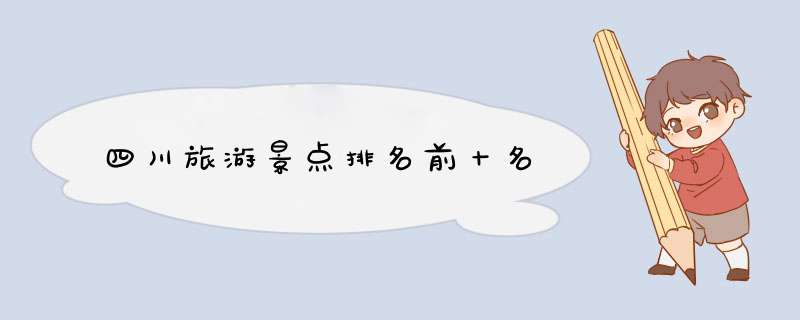
.png)
